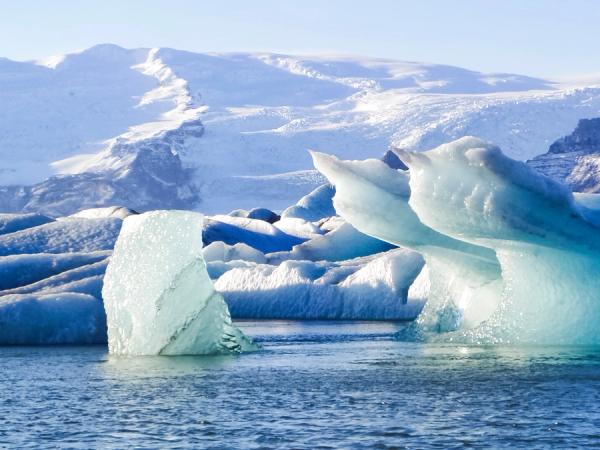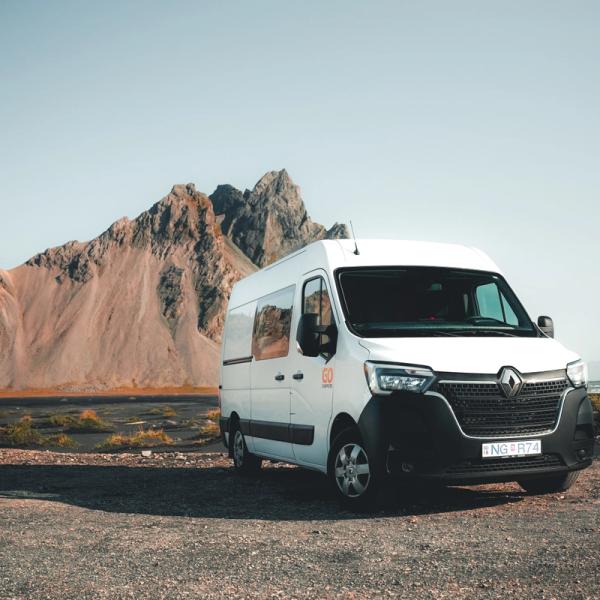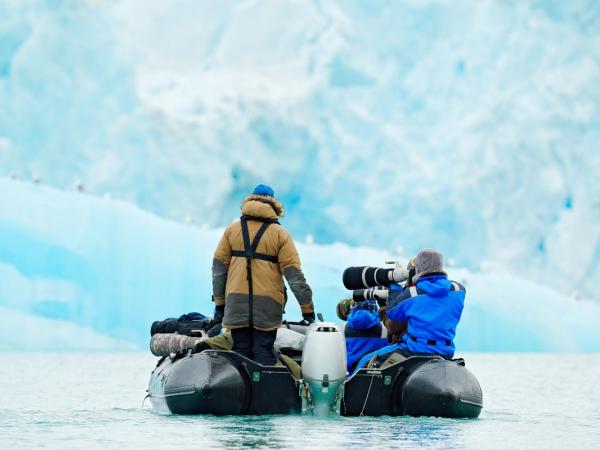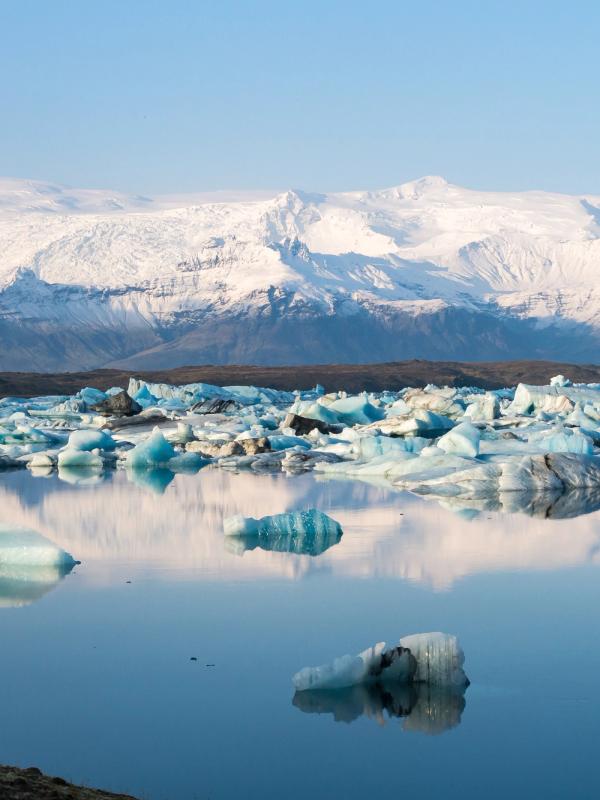
Jökulsárlón Glacier Lagoon: Iceland's Floating Ice Paradise
Imagine a lake filled with floating chunks of ice, some as tall as buildings, with a massive glacier in the background and seals playing between the icebergs. This isn't from a fantasy movie—it's Jökulsárlón Glacier Lagoon, one of Iceland's most stunning natural wonders.
I visited Jökulsárlón in May, and I can say it looks even better in person than in photos. The boat tour was a highlight, letting me get close to the icebergs while guides shared facts about the area. I even spotted several seals swimming among the ice.
Let's cover everything you need to know about this incredible destination to help you plan your own visit.
Key Takeaways
- It’s Iceland's largest glacial lake with floating icebergs that break off from Breiðamerkurjökull glacier.
- It’s located in southeast Iceland, 236 miles (380 km) from Reykjavík, along Ring Road (Route 1)
- May-September offers the fullest experience with most tours operating; winter provides Northern Lights possibilities, but limited activities
- You can do a boat tour (amphibious or zodiac) or a kayak tour
What is the Jökulsárlón Glacier Lagoon?
Jökulsárlón is Iceland's largest glacial lake, located in Vatnajökull National Park in southeast Iceland. The lagoon sits at the edge of Breiðamerkurjökull glacier, which flows from the larger Vatnajökull ice cap.
What makes this place special is how chunks of ice break off from the glacier and float across the lagoon before drifting out to sea. These icebergs come in various shapes, with blue and white colors that shift with the light.
The lagoon is home to wildlife, mainly seals that hunt fish and birds like Arctic terns. During my visit, I saw several seals swimming and sunbathing on ice chunks—they seemed unbothered by visitors and boats.
Fun fact: Jökulsárlón has appeared in several movies, including James Bond films "A View to a Kill" and "Die Another Day," as well as "Tomb Raider" and "Batman Begins."
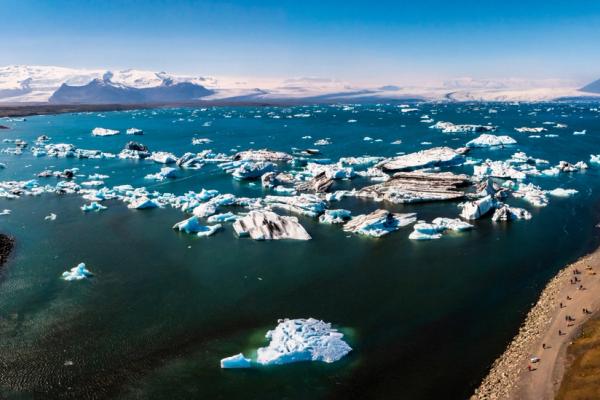
Formation & Progress
Jökulsárlón didn't always exist—it's a new natural feature that formed in the 1930s when the Breiðamerkurjökull glacier started retreating due to warming temperatures. What began as a small glacial lake has grown dramatically over the decades.
To put this growth in perspective:
- In 1975, the lagoon covered about 7.9 square kilometers
- Today, it spans approximately 18 square kilometers
- The lagoon continues to expand as warm temperatures speed up the glacier's retreat
The growth isn't slowing down. The glacier retreats about 200 meters every year, feeding the lagoon with fresh icebergs. This ongoing change means that the lagoon you see today will look different from what visitors will see in years to come.
Jökulsárlón is now Iceland's deepest lake, reaching depths over 284 meters in some areas. The deep blue water mixes with the white and blue ice to create the striking colors that make this place so photogenic.
Location & How to Get There
Jökulsárlón is in southeast Iceland, between the towns of Höfn and Skaftafell along Iceland's Ring Road (Route 1).
By Car
The most flexible and best way to reach Jökulsárlón is by renting a cámper (or a car):
- From Reykjavík: 236 miles (380 km), about 5 hours driving time
- From Höfn: 48 miles (77 km), about a 1-hour drive
- From Vík: 119 miles (193 km), roughly 2.5 hours
The lagoon is easy to access from Ring Road, with a large parking lot right next to it. Parking costs about 1,000 ISK (around $7 USD) per vehicle.
By Tour
If you prefer not to drive, many tour companies offer day trips from Reykjavík, though be ready for a long day:
- Day tours: Usually last 14-16 hours due to the distance
- Multi-day tours: Often include Jökulsárlón as part of a south coast trip
- Local tours: Available from nearby towns like Höfn if you're already in the area
By Public Transport
While harder, it's possible to reach Jökulsárlón by bus:
- Strætó (public bus) operates route 51 between Reykjavík and Höfn
- Service runs on weekdays except Wednesdays
- You'll need to ask the driver to stop at Jökulsárlón
- This option requires careful planning and possibly overnight stays nearby
No matter how you get there, the journey offers stunning scenery—waterfalls, volcanic landscapes, and vast lava fields make the trip worthwhile even before reaching the lagoon.
Best Time to Visit
Jökulsárlón offers an entirely different experience depending on when you visit. Each season has its own appeal.
Summer (June-August)
Summer brings mild temperatures (50-60°F/10-15°C), nearly 24 hours of daylight, all boat and kayak tours operating, and better road conditions. The downsides are peak tourist season with larger crowds and higher prices for accommodation and tours.
Spring (April-May) & Fall (September-October)
I visited in May and found it to be a great time. The weather was cool but manageable, and while some tours were running, there weren’t that many people. It was quite a nice atmosphere.
Spring and fall offer fewer visitors, slightly lower prices, most activities still available, and beautiful seasonal colors (spring flowers or fall foliage). The downsides include slightly cooler temperatures and the fact that tours are sometimes cancelled due to weather.
Winter (November-March)
Winter gives you a chance to see the Northern Lights over the lagoon, fewer tourists, and a unique winter landscape with snow-covered surroundings. The challenges are limited daylight (as little as 4-5 hours in December), many boat tours don't operate, road conditions can be tough, and temperatures are colder.
If photography is your main goal:
- Early morning or late evening in summer offers the best light for photos
- Winter visits can yield stunning images of blue ice against snow
- The lagoon looks different throughout the day as light changes, so if possible, visit more than once
For the fullest experience with the most activity options, late May through early September provides the best balance of weather, accessibility, and available tours.
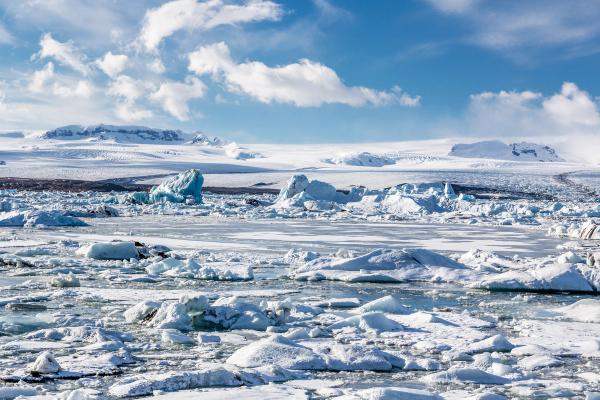
What to Wear
Iceland's weather is unpredictable, and at Jökulsárlón, you're dealing with a microclimate affected by the glacier. You must bring proper clothing for comfort.
Year-Round Essentials
- Waterproof jacket and pants (even on seemingly clear days)
- Warm layers that you can add or remove as needed
- Sturdy, waterproof hiking boots or shoes with good grip
- Hat and gloves (the wind near the lagoon can be fierce)
- Sunglasses (important for reducing glare from ice and water)
Summer Additions
Even in summer, don't expect beach weather. Pack:
- Light thermal base layers
- Medium-weight fleece or wool mid-layer
- Thin hat and gloves (yes, even in summer)
- Sun protection (the reflective ice can intensify sun exposure)
Winter Musts
If you visit during winter, you'll need serious cold-weather gear:
- Thermal base layers (top and bottom)
- Heavy wool or fleece mid-layers
- Insulated, waterproof jacket and pants
- Waterproof winter boots with good traction
- Warm hat, scarf, and insulated gloves
- Hand and foot warmers for extra comfort
For Boat Tours
If you're taking a boat tour (which I highly recommend), you'll need:
- All the regular weather-appropriate clothing
- For zodiac tours, they provide flotation suits to wear over your clothes
- For amphibious boat tours, standard warm clothing is sufficient
- For kayak tours, wear thin layers under the provided dry suits
Remember: Iceland's weather saying goes, "If you don't like the weather, wait five minutes." Dress in layers so you can adjust throughout your visit as conditions change.

Things to Do
To be honest, simply standing at the lagoon's edge and taking in the view is cool enough. However, there’s some stuff you can do there that will make your visit even cooler.
Boat Tours
I took a boat tour during my visit, and it was definitely the highlight. You have two main options:
Amphibian Boat Tours
These 30-40 minute tours cost around 6,900 ISK ($54 USD) for adults and 3,500 ISK ($28 USD) for children 6-12. The larger boats take you among the icebergs for close-up views. The guides share information about the lagoon's formation and history. They sometimes scoop up small pieces of ice from the water that you can touch and even taste.
These tours are ideal for families, people with mobility issues, and travelers on a tighter budget. They typically operate from April to October, weather permitting.
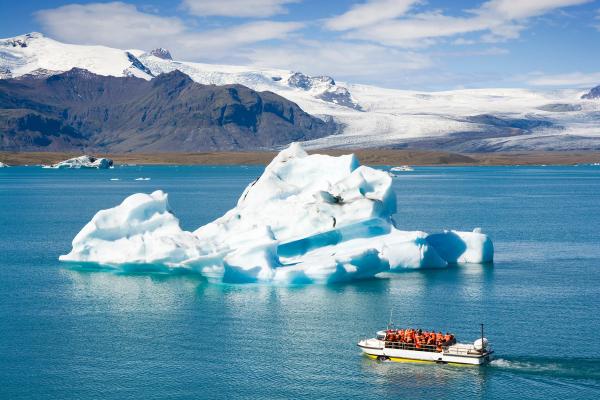
Zodiac Boat Tours
These 75-minute tours (approximately 2 hours total, including preparation) cost around 15,700 ISK ($123). These smaller, faster boats get you closer to the glacier and icebergs. The smaller group size (maximum 12 people) means a more personal experience.
Zodiac tours are best for adventure seekers, photographers wanting closer access, and those looking for a more intimate experience. They usually run from June to September.
During my boat tour, we saw several seals swimming among the icebergs and lounging on ice patches. The guides were knowledgeable and friendly, pointing out interesting ice formations and explaining how the lagoon has changed over time.
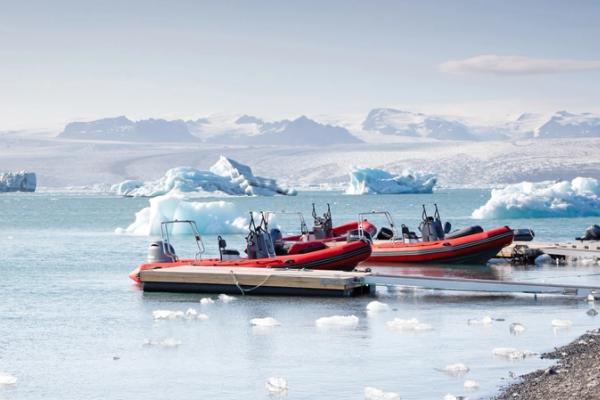
Kayak Tours
For the adventurous, kayaking shows you the lagoon up close. Tours run 1.5-2 hours and cost 16,000 ISK ($124). You paddle stable kayaks between icebergs, getting closer to the ice than most people.
These tours run from May to August. No prior experience is required, but you must be physically fit and at least 14 years old.
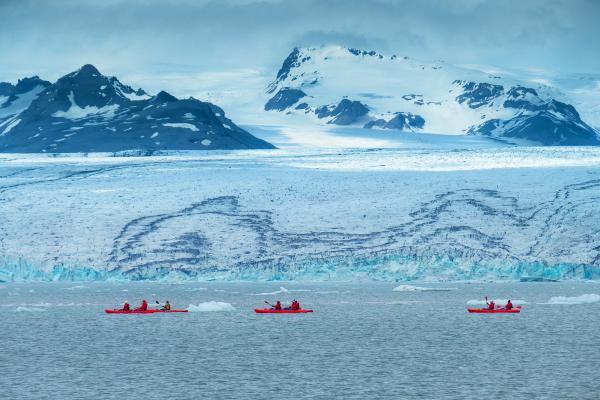
Walking and Photography
The shore has great views, and it’s free to walk around. Paths run along different parts of the shoreline. A small hill gives you higher views for photos. Morning and evening offer the best light. You might see seals and birds while walking. Entry is free (just parking costs if you drive).

Diamond Beach
Just across the road (a 5-minute walk) is Diamond Beach, where ice chunks land on black sand.
The black sand makes the ice stand out. It’s perfect because it’s literally 5 minutes away from the lagoon, and it’s also free to visit.
I went to Diamond Beach after the lagoon. The ice on the black sand was nice, but the lagoon was better. Since it's so close, check it out anyway.
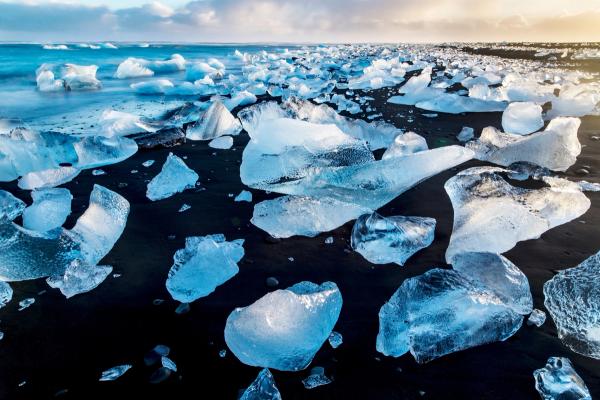
Places to Visit Nearby
Several good spots surround Jökulsárlón that fit easily into your trip.
Vatnajökull National Park
Europe's largest national park surrounds the lagoon. It has hiking trails for all levels. Companies run glacier walks, and in winter, you can tour ice caves. The visitor center is a good starting point if you don’t know where to start.

Skaftafell Nature Reserve
About an hour west of Jökulsárlón, Skaftafell is ideal for hiking. Trails work for all fitness levels. See Svartifoss, a waterfall with black columns that inspired Reykjavík's famous church. The reserve also offers glacier hikes and explains local history.
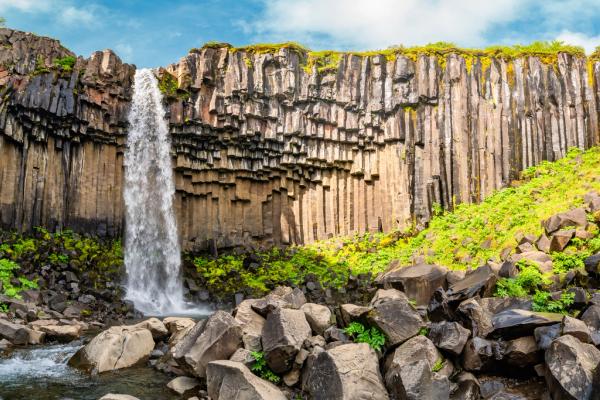
Fjallsárlón Glacier Lagoon
Just 10 km west sits Fjallsárlón, a smaller lagoon most people miss. Boat tours here have fewer people and a quieter feel. You get closer to the glacier than at Jökulsárlón, making it a favorite spot among photographers. Visit both to see different sides of Iceland's ice.
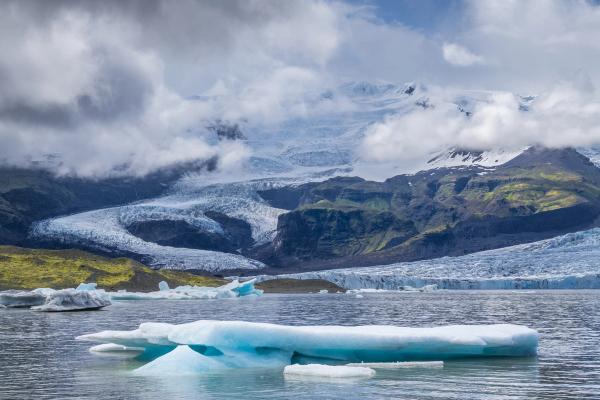
Höfn
This fishing town, 45 minutes east, makes a good base. Höfn is famous for its lobster, with restaurants serving fresh seafood. You'll find accommodations at all price points. Local museums showcase how towns coexist with the glacier.

Ice Caves (Winter Only)
In winter, you can explore ice caves under the glacier. These open from November to March when the ice is stable. Tour companies run trips with guides who take you through blue ice chambers. Book early—tours fill up fast.
If time is short, see the lagoon first, then Diamond Beach, and finally Fjallsárlón for a quieter experience.

Campsites Nearby
Camping allows you to be closer to the lagoon while enjoying the beauty of Icelandic nature. Here are your options:
Skaftafell Campsite
In Skaftafell Nature Reserve, about an hour west, this site has toilets, showers, cooking areas, and power. It costs about 1,800 ISK ($14) per adult.
Spots are first-come, first-served. It's open all year, but full services run only May to September.

Camping Höfn
In the town of Höfn, 45 minutes east, this site has toilets, hot showers, a kitchen, wifi, and power. It costs around 2,200 ISK ($16) per person.
Book ahead in summer. The main season is May to September.
Þakgil Campsite
Near Vík, about 2 hours west, this site has basic toilets, showers, and a cave with a grill. The cost is approximately 2,800 ISK ($22) per person.
The mountain scenery makes it special. Open June to September only.
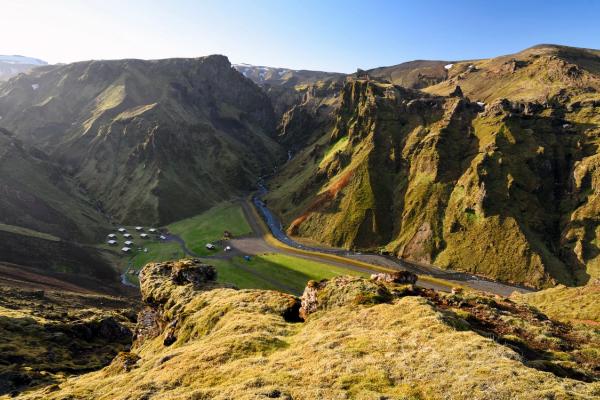
Wild Camping
Iceland has strict rules. You can't camp near the lagoon or in the national park, never in protected areas or private land, and must use proper campsites in this area.
If you don't have camping gear, nice, cheap options include Höfn Guesthouse with basic rooms 45 minutes away, Gerði Guesthouse between Höfn and Jökulsárlón, and Hali Country Hotel near the lagoon.
Check when sites are open, as many run only in summer.
Why is Jökulsárlón Glacier Lagoon Worth Visiting?
After seeing many natural spots in Iceland, Jökulsárlón stands out. Here's why:
Unique and Changing Landscape
The lagoon changes daily. Icebergs move, flip, and shift shape. If you visit twice in one week, you'll see different scenes each time, which is pretty cool.
Easy to Access
While many popular places in Iceland require challenging hikes or special transport to be reached, Jökulsárlón sits right off the main road, so almost anyone can see this natural wonder.
Many Things to Do in One Place
Few spots offer so many options. Take boat tours to see icebergs up close, watch seals and birds, take great photos even as an amateur, visit Diamond Beach across the road, and see how the place changes with seasons.
Great for Photos
Even with just a phone, you'll take great pictures. The mix of colors, ice, and mountains creates perfect photos.
Most of all, Jökulsárlón creates wonder. Watching ancient ice drift by while seals swim leaves you with awe that stays with you long after you leave.
Conclusion
Jökulsárlón shows Iceland at its best—a place where ice, water, wildlife, and landscape create something special. Whether you boat among icebergs, kayak, or just stand and watch, this glacier lagoon deserves its fame as Iceland's "Crown Jewel."


